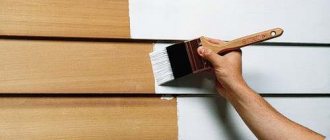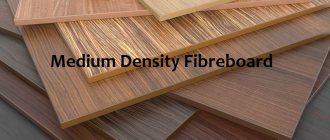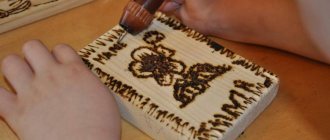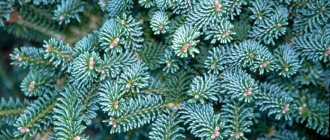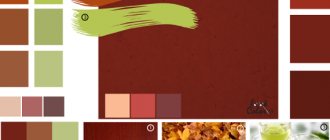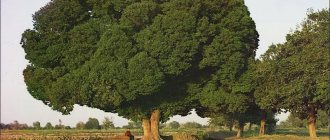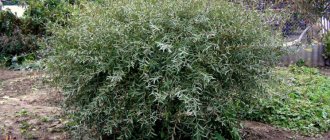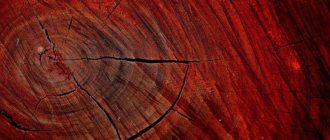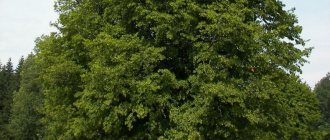No matter how noble the wood may look in decoration, its strength is not as high as we would like. Sooner or later, cracks, holes, and other defects become noticeable on the wood. The editors of HomeMyHome will tell you what to do about it, telling you about an excellent product - wood putty. This is exactly what we will discuss in our review today.
A good, reliable product that hides surface defects
Types of wood putties: why such a wide selection of materials
The main function of this material is to hide defects. But, since the violations of the base are different, as are the types of wood, and the operating conditions of a particular product are also not similar to each other, there are different types of putty mixtures. Let's get acquainted with their types in more detail.
Gypsum-based putties
As you know, gypsum is not friendly with moisture, therefore, in terms of strength and elasticity, the gypsum composition is inferior to other mixtures.
The advantages of gypsum compositions are their vapor permeability, which will preserve the microclimate in the room, and the cost of the material is low in comparison with others.
It is easy to treat large areas of the surface with gypsum putty.
If the question is how to putty on a wooden surface in a dry room, then you can safely buy a gypsum compound.
Acrylic wood putty
Acrylic putties are not afraid of moisture and temperature changes, and they are not afraid of mechanical loads. This is ideal for the floor, but the mixtures can also be used outside the building.
Acrylic is highly elastic; it is a good wood putty for filling deep defects, small cracks, and wood pores. There is no shrinkage: once the mixture was applied, it remained that way after drying.
The service life is stated to be from three to ten years, but prices for products containing acrylic are noticeably higher
Epoxy putty for wood
Epoxy is used to repair wooden surfaces: doors, window frames, columns, and beams are restored with this mixture. Epoxy putty does not react to moisture and is a highly durable inclusion once it hardens.
Epoxy putty is ideal for working with wood
This material contains two elements that need to be mixed before work: they allow the mass to set quickly. The surface with epoxy can be easily sanded and painted; it will not be affected by water or chemical solvents.
But you shouldn’t apply stain; the appearance of the treated area will be spoiled.
Oil-based putties
It is clear that the composition contains oils and solvents. The product is used to treat the surface of building facades before painting them.
This composition is suitable for outdoor use due to its characteristics: water resistance and resistance to adverse environmental influences.
Manufacturers have selected the optimal composition for their products
Such a surface will not crack or crumble. Thanks to manufacturers, you can find a mixture of the desired color, even with the ability to imitate a wooden texture.
Other varieties
Wooden putty is safe for health if it does not contain solvents. We are talking about an aqueous composition that boasts plasticity and elasticity, as well as the absence of a pungent odor. Excess material is wiped off with a damp cloth.
Water-based putty does not harden for a long time in a container, which makes its shelf life quite long
This is a composition with a high level of adhesion, so it is effective on different surfaces.
In addition, we can add that when finishing they use nitro putty, adhesive, latex.
The main components of nitro putty are cellulose, its resins, ethers, plasticizers
How to cover up wood damage
No wood surface can remain in perfect shape all the time. Fortunately, there are many products available on the market that can cover up cavities.
One of them is wood putty. Which wood putty is best? There is no clear answer to this question.
- Much depends not only on the mixture, but also on the type of wood and work.
- Before you start choosing putty, you should determine for what purpose you plan to use it.
- There are many wood putty options available in stores.
- The colors are very varied, so there is a chance to find the one that best suits a specific surface.
You can also find white and colorless universal putties.
Wood putty is most often used in places such as: wooden stairs, parquet floors, furniture, frames, doors, as well as various types of structures. There is a modeling putty available that is primarily used on decorative and collectible items.
Leading manufacturers: tested by time and users
The modern market offers a wide range of good domestic and imported mixtures produced by famous and reliable brands.
Wood putties from Tikkuril are in demand. This is a Finnish company that offers its products at high prices, which are fully justified by the quality.
Tikkurula has been on top for a long time
Famous for its quality products. Their products are inexpensive, but the quality does not suffer from this.
Lakra has decent products
Domestic wood putty is cheaper than many compounds from competitors, but the quality of the supplied products is quite high.
Eurotex is also considered worthy of mention.
Types of putties
In addition to the color scheme that imitates wood species (pine, oak, alder, ash, spruce and others), there are differences in the chemical composition of various putties. They are divided into the following types:
- putties based on synthetic solvents;
- water based;
- oil;
- polymer;
- plaster.
How to choose wood putty: don’t waste money
How to putty wood, that is the question. We select suitable compositions for interior and exterior work.
Wood putty for exterior use and its effect
For exterior work, they prefer to use thermal and moisture-resistant wood putty. The walls of the building are exposed to alternating temperatures, precipitation, and ultraviolet radiation. Therefore, in this case, we consider compositions not only with easy application, but also with elasticity.
Acrylic compounds are suitable, protecting wood from fire and preventing it from deteriorating from outdoor temperatures.
Epoxy putties are two-component, based on petroleum resin, pigment additives, and plasticizers. These are mixtures that qualitatively fill defects and are resistant to deformation and destruction.
Epoxy deserves special consideration as an exterior finishing product as a base coat.
The oil mixture will retain oils, chalk, water and plasticizers. For outdoor coverings, this is a fairly resistant material, durable and reliable. Those who are wondering how long it takes wood putty to dry should read the instructions directly on the container. The oil composition takes more than a day to dry.
Wood putty for interior work
It's not just the walls that are plastered inside houses and apartments. This is a material for floors, ceilings, doors, which allows you to perform basic finishing of the element. Any putty must meet a number of requirements: plasticity, suitable consistency, strength, good adhesion to wood, gradual hardening and avoidance of cracks.
For home work, you can use epoxy, polymer, acrylic
Epoxy is used to seal deep defects and level surfaces. No special tools are required for the job, and sanding is easy and relaxed. If you are faced with a dilemma about which wood putty to choose for the floor, then you should first of all think about epoxy.
Plaster in all rooms, except the bathroom and kitchen, is good because it both absorbs and releases excess moisture into the air and does not negatively affect the microclimate of the room
Polymer compositions are universal; they mask seams, seal deep cracks, and perform finishing work for subsequent coatings with paints and varnishes. This is the same composition that is good for correcting defects on frames, ceilings, door frames and the door itself. This composition is not used for working with floors.
Waterproof mixtures are designed for use in the bathroom and kitchen.
Oil based
The only type of wood putty suitable for outdoor work; it can be used outdoors even without further varnishing or painting. Suitable for processing wooden facades.
It has strong water-repellent properties, is not afraid of ultraviolet radiation, exposure to open air, including sea air. Available in packaging from 500 grams to 15 kg.
How to use putty materials
Let's consider the main areas of application of this material. This is the elimination of defects on a wooden floor, sealing various kinds of cracks, imitation of wood texture on the surface.
Putty for wooden floors
Putty for wooden floors must contain components that will prevent the material from quickly wearing out from mechanical stress.
If you try to save money, then after 2-3 years the sealed surface will deteriorate and crack
Aqueous, paste-like and gel-like compositions are suitable for the floor. If the product contains fiber fiber, then the durability of the finished coating is guaranteed.
Nitro-based putty will also be stable. In the composition you need to look for cellulose ether components, acetone, resins. Products containing wood flour have a high level of adhesion to any type of wood. Nitro putties, for all their positive qualities, have a rather pungent odor.
Homemade compounds mixed with wood flour ideally fill cracks and seams on wooden floors
Wood putty: what to use to fill cracks
A small gap in a wooden floor is sealed either with a putty of a suitable color, or with a composition of any shade, followed by priming and painting the floor.
Cracks 3-4 mm in size are sealed with acrylic products; larger defects should not be touched, as the finished material will crumble and fall out.
The solvent-based product is well suited for sealing cracks up to 1 cm, and can even eliminate defects on heated floors.
Oil compositions for eliminating narrow cracks should be mixed with chalk, and for wide flaws - with wood dust.
Imitation of wood from putty as a way to decorate the surface
To make imitation wood, a number of tools are required. You need to get a palette knife, a textured roller, a roller with a picture of a wood cut, several types of rubber spatula, and a stencil.
Acrylic, gypsum and silicone bases are suitable for interior finishing.
Beautiful imitation wood made of putty
Creation of models and furniture
The art of sculpting, finishing and creating furniture from wood requires special putties. The characteristics of such wood putties are different.
The main criterion here is the post-processing method.
- Classic one-component putties are excellent for filling small cavities or cracks.
- One-component putty, which is relatively soft, is definitely better suited for hand processing, while harder ones, usually two-component, are easily processed by machine.
- It is important to know how thick a layer of putty can be applied at one time. Some solutions can dry evenly even a few millimeters thick; for others, a millimeter is the upper limit.
- Sometimes putty mixed with dust or sawdust is used. They are available in the form of a liquid base, but when working with the material, dust and sawdust are formed; for example, you can wipe off the wood from the invisible side of the object with thin paper.
Such putties are perfectly matched in color and allow you to achieve an aesthetic effect at the cost of a lot of work.
Recipes for making your own wood putty
If you wish, you can make a putty mixture with your own hands, which will not be inferior in quality to store-bought ones. It's all about good, quality ingredients.
The most popular component is crushed chalk, which must be mixed with PVA glue until it becomes sour cream. It is permissible to add small sawdust.
This product will take a day to dry.
The second method is to dilute the chalk with water-soluble acrylic varnish. The paste should be moderately liquid.
Important! Homemade mixtures are not prepared in large volumes, and unevenness and smudges are removed immediately.
Application rules
The wood on which the putty will be applied is rough sanded, then dust is removed from it with a brush and a rag, or even better, blown off with a pneumatic gun. Next, apply a spatula with a small slide to the flaw. No matter how much manufacturers praise their product, the putty still shrinks when it dries.
Opinions differ about wood primer. The fact is that putty holds much more firmly on “bare” wood. But after removing its excess, stubborn stains of ingrained putty remain on the wood around the repaired defect.
A primer solves this problem, but the adhesion of the putty to the primed wood is noticeably worse. It is advisable to keep the spatula clean - this will simplify the work. If you need to apply a thick layer, you need to do it in several passes, allowing the intermediate layers to dry. After drying, excess putty is removed with sandpaper.
What other materials are used for woodworking?
In addition to putty products, other compounds are also used for working with wood. Their list includes primer and plaster. Each product has its own functions and characteristics.
Primer for wood
Primer is a mandatory material for use in many areas of surface treatment. It is designed to bind substances on different layers of the surface, which creates a waterproof varnish film. This is the protection of the tree from the negative effects of external factors.
Important! The primer seriously saves the consumption of materials, and, therefore, finances.
But all this will only work if the primer is of high quality and suitable for woodworking. A soluble primer protects the material from destruction, and a waterproof primer protects it from moisture.
There are oil and acrylic compositions. In any case, they will be the base layer for subsequent finishing.
Wood plaster
Plaster protects the wood from rotting, but the condition is to first coat the surface with antiseptic compounds, which must dry completely.
A plastered wall resists the appearance of mold if the initial humidity threshold does not exceed 12%. Plaster protects the surface from termites and rodents.
Use lime, cement, lime-gypsum, gypsum plaster
How to putty wood - technology
The technology for applying putty involves a preparatory stage of work in order to use the composition as efficiently as possible afterwards. Otherwise, the coating will not fully fulfill all its characteristics. Afterwards, you can apply the solution; the work is similar to working with other mixtures suitable for other substrates.
The technology for applying putty involves a preparatory stage of work in order to use the composition as efficiently as possible afterwards.
Surface preparation
First, the old finishing coating, if any, is removed, all types of contaminants are removed, and no unnecessary parts are left on the base. If there were metal objects, then enamel is applied in their place to prevent corrosion from appearing through the layer. Next, treat the areas with a brush to remove all debris and wipe with a damp cloth.
The base must be primed; the composition must be selected based on the chosen putty; they must be compatible. The layer is necessary to improve adhesion and obtain a better level of protection against rotting and biological formations.
The base must be primed; the composition must be selected based on the chosen putty; they must be compatible.
Applying the mixture
When the primer layer has dried, check the timing on the packaging in the manufacturer's instructions, and proceed to puttying. First, when choosing a dry mixture, it is brought to a liquid state by mixing with water. The process is carried out according to the instructions from the manufacturer.
The spatula is pressed against the surface, the goal is to close all the cracks with the composition. The first layer is made at least 2 mm thick, and the dried surface is treated with sandpaper. Then apply the next layer to eliminate existing flaws; here the thickness should not exceed 1.5 mm. The newly dried layer is sanded.
The spatula is pressed against the surface, the goal is to close all the cracks with the composition.
Features of working with plywood
When plywood is laid on the floor, it is advisable to strengthen it and increase its protective properties before filling it. To do this, the surface is pre-impregnated with drying oil, you can choose PVA. It is worth considering that the process will not be quick, due to the long drying time of the base, this moment cannot be accelerated, each layer must dry well.
The second option for increasing the strength of plywood is impregnation with heated drying oil; in a water bath, the impregnation is heated to 50-60 degrees, but the temperature cannot be exceeded. The application tool is a roller or brushes; drying is accelerated using a hair dryer. It is necessary to apply layers as many times as possible until the material stops absorbing drying oil. If it becomes clear that large drops of the product remain on the surface, then the treatment can be completed.
Afterwards an antiseptic substance and acrylic-based varnish are applied. Priming is also a mandatory step; primers designed for wood are selected. And only after these stages do they proceed to puttying the plywood; the process is the same as applying a layer to other wooden bases.
When plywood is laid on the floor, it is advisable to strengthen it and increase its protective properties before filling it.
How much does wood putty cost - price review
After familiarizing yourself with the work being carried out and the performance characteristics of the materials, it’s time to familiarize yourself with the prices for popular types of putties made by different manufacturers.
| Name | Characteristic | Price for June 2022, rub. |
| TEX on wood Profi | Ready-made latex putty; room type: dry; mixture consumption (1 mm layer): 1–4.70 l/m²; mixture consumption (1 mm layer): 0.60–2.80 kg/m² | 55 |
| VGT acrylic on wood “Extra” | Ready-made acrylic putty; type of putty: finishing; room type: dry and wet; mixture consumption (1 mm layer): 0.50-1.40 kg/m² | 51 |
| PRESTIGE for wood | Ready-made acrylic putty; for interior work; processing material: wood, stone, brick, concrete | 46 |
| Acrylic varnish on wood | Ready-made acrylic putty; type of putty: universal; room type: dry and wet | 131 |
| Faktura on wood | Ready-made acrylic putty; type of putty: finishing; room type: dry and wet; mixture consumption (1 mm layer): 2 kg/m² | 64 |
| Berger-Seidle Pafuki Super | Nitrocellulose putty; layer thickness: 2 mm; for interior work; processing material: wood | 1450 |
| Borma Wachs Holzmasse | Ready-made nitrocellulose putty; drying time 12 hours; for internal and external works; processing material: wood | 402 |
Treat wooden surfaces correctly, then the service life of the product will extend significantly, and the room will remain beautiful.
Water based
Unlike synthetic solvents, water is not toxic and does not have a pungent odor; therefore, water-based putties are harmless to humans and animals at all stages of work and upon completion. It dries relatively slowly and has good adhesion, which allows it to be applied to carefully sanded and even polished wood.
Read here! Italian children's furniture. What are the features?
To wipe off excess from the surface, simply use a damp cloth. After complete drying and varnishing, it is not susceptible to moisture. It is elastic, has a long service life, is fireproof and is not susceptible to heat and cold.
The main reasons for the formation of cracks in the floor
If cracks appear after laying the wooden covering, it means that the work technology was violated, during which the material dried out and a gap formed.
The formation of cracks is also promoted by:
- Activity of rodents and insects that dig holes through the wood . This reason is the most common, since in order to save money, many people ignore the need to seal the underground space. The cracks in the concrete are open gates, which pests will definitely take advantage of and turn the wooden floor into dust.
- Increased humidity and improper care of the floor - if the ventilation system in the room is broken and high levels of humidity remain, the wood will certainly absorb it. Swelling of the fibers inevitably leads to the development of microscopic bacteria that will destroy the floor.
- Lack of protective coating - when the floor is not exposed to paint and varnish products, the wood wears out faster, and any temperature changes or mechanical damage can cause cracks and large holes to form.
The sooner the problem is identified and action taken, the greater the chance of maintaining the integrity of the wooden floor. Where there are cracks, there will always be insects, mice, rats and other parasites, the proximity of which is unacceptable for humans.
FAQ
How large potholes can be filled with putty?
Most manufacturers do not recommend applying a layer thicker than 2 mm. Gaps and cracks should also not be wider than 2-3 mm. If they are larger, you need to glue in pieces of the same wood, then sand the crack and putty it (if necessary).
Which putty should I use to fill shallow dents on a polished or varnished surface?
The best option is to use a transparent composition. Epoxy materials can be used. For shallow flaws, it is more correct to use varnish - it is applied with a thin splinter, trying to get exactly into the recesses.
If you plan to do a solid painting, what kind of putty should you choose?
Any putty is suitable for solid painting. Here the selection criterion will not be the type of finishing, but the ease of working with putty, drying speed and cleanliness of processing. The best and inexpensive option is acrylic putty, but other types can be used
What tool is used to apply the material?
If the processing area is large, use the usual finishing tools - a spatula, a grater, an emery net. For small and delicate work, they use appropriate tools, even homemade ones - for example, cutting and sharpening narrow strips of plastic.
What is the duration of intermediate (interlayer) drying?
This indicator is different for all types of putty. Detailed information can be found on the material packaging. It is important to keep in mind that minimum values are usually indicated. It is recommended to leave the layers longer to allow them to set properly.
Purpose and application
The main task of putty is to restore the integrity of wooden structures. Using this tool, several issues can be easily resolved at once:
- sealing gaps and cracks in the wood structure, joints and seams when connecting two wooden elements, as well as leveling the surface topography;
- creating a protective layer that will be a powerful barrier to moisture and contaminants trying to penetrate the material;
- increasing the wear resistance of wooden structures and preventing the occurrence of rotting processes and the formation of fungus on the surface;
- makes it possible to create a single shade for subsequent painting of the product;
- restoration of the appearance of old materials, after which they look like new;
- improves adhesion when applying decorative elements.
All that is needed from the putty is to create a horizontal layer for subsequent decorative work. Otherwise, the result will not meet the owner’s requirements. In order for construction work to be carried out efficiently, it is necessary to choose the right means, which must meet the following requirements:
- the putty must contain plasticizers;
- the mixture should ensure good adhesion of materials;
- absence of toxic and harmful components that adversely affect the human body;
- dry quickly for further processing.
Wood putty is presented as a ready-made mixture and does not need to be diluted with water, as dry putty materials require. It is widely used for processing wooden structures of the Soviet period, as well as completely new products, restoring old parquet and other surfaces.
Review of manufacturers
European and Russian brands produce universal putties and wood products:
- Tikkurila . The company offers a large selection of ready-to-use products that can be diluted with water. Can be used without additional paint. Some putties give a shade of mahogany, oak, pine or beech.
- Eurotex . The brand’s compositions perfectly eliminate minor defects and are suitable for subsequent painting. They dry quickly and adhere firmly to the surface, creating a matte layer.
- "Belinka". The putties are made in 6 “woody” shades, dry quickly and are easy to use. They have virtually no odor and are well suited for treating large areas.
- "Rainbow". The product has high mechanical strength and minimal shrinkage. Dries in 3-4 hours at temperatures up to 22 degrees.
- "Bolars." Finishing putties are used for external and internal work in the temperature range from -40 to +60. One of the best frost resistance indicators on the market.
When choosing a putty for wood processing, one is guided by the tasks that it must solve and the operating conditions of the object. You need to give preference to well-known brands, buy products in places where they can present certificates for them.
What is the point of puttying wood outdoors?
Exterior wood putty can be used for a variety of purposes. For example, for treating cracked wooden windows and wooden openings, carrying out repair work on a facade made of eurolining, block house, rounded logs, restoring the damaged integrity of floor coverings made of natural materials, sealing seams between sheet flooring materials (OSB, chipboard, fiberboard).
The use of the composition is reflected in a voluminous list of advantages. The most significant:
- Putty applied to cracks prevents moisture from penetrating into the wood fibers, thereby reducing the likelihood of them rotting. Due to this, their service life is significantly extended.
- The elastic composition penetrates deeply into cracks, eliminating surface defects, making it more aesthetic and attractive.
- When purchasing putty to match the wood being treated, it is possible to restore its original appearance without the use of paints. And vice versa, use a transparent mixture, which after drying will be invisible.
- When processing a surface sheathed with sheet building materials, putty is used to seal the seams and obtain a single “seamless” surface.
I emphasize! If the material on which you apply the putty constantly gets wet in the rain and snow, all the unique useful qualities of the wooden putty will disappear, the applied composition will crack and fall off.
